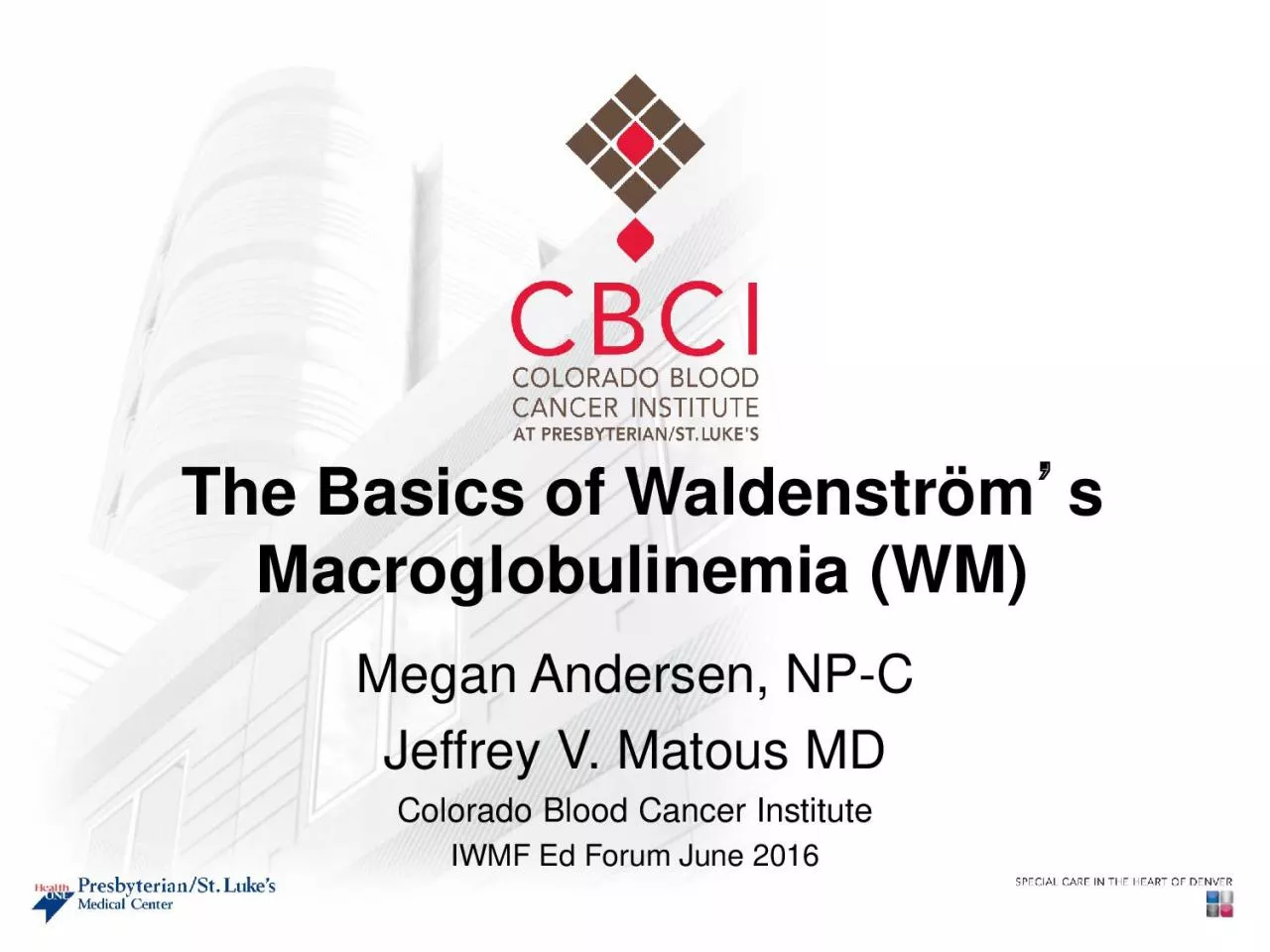PDF-The Basics of Waldenstrm
Author : sylvia | Published Date : 2022-08-26
s Macroglobulinemia WM Megan Andersen NP C Jeffrey V Matous MD Colorado Blood Cancer Institute IWMF Ed Forum June 2016 Objectives Describe pathobiology of malignant
Presentation Embed Code
Download Presentation
Download Presentation The PPT/PDF document "The Basics of Waldenstrm" is the property of its rightful owner. Permission is granted to download and print the materials on this website for personal, non-commercial use only, and to display it on your personal computer provided you do not modify the materials and that you retain all copyright notices contained in the materials. By downloading content from our website, you accept the terms of this agreement.
The Basics of Waldenstrm: Transcript
Download Rules Of Document
"The Basics of Waldenstrm"The content belongs to its owner. You may download and print it for personal use, without modification, and keep all copyright notices. By downloading, you agree to these terms.
Related Documents














